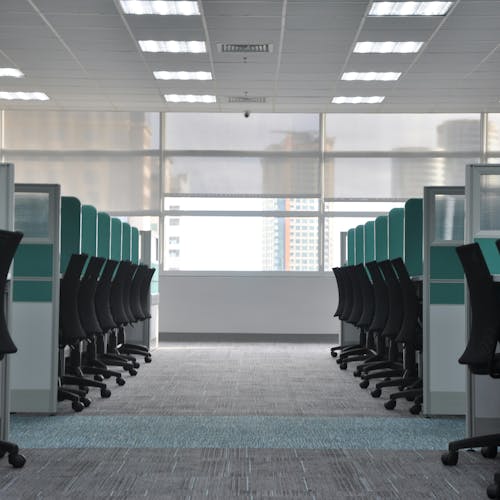MULHOLLAND: Schools must stay open, despite obstacles
Column: Cup of Joe

The issue of whether or not schools and universities should remain open is, once again, front and center. That is because of the omicron variant of the coronavirus disease (COVID-19) pandemic. The omicron variant is highly transmissible and cases are at record highs and, once again, everything seems like a mess. Students and teachers are staging walkouts, schools are going remote again and, in general, everyone is either sick or incensed.
There are some benefits to hybrid learning. Students do not have to waste time and money commuting, the risk of getting and transmitting COVID-19 goes down and it offers a little more flexibility in our increasingly hectic world. The decision to have Rutgers classes online until the beginning of February was a reasonable precaution but at the start of next month, the University needs to reopen and not postpone again.
But there are also significant trade-offs to Zoom school, especially for younger students in K-12 schools. Starting with their home situations, I still do not understand how households with two working parents can manage a situation where they have a five-year-old trying to learn addition and subtraction over Zoom while they work. It is entirely unsustainable and far too much of a burden for working parents.
The long-term effects of at-home schooling on younger children might not be fully known for several years, but we are starting to get an idea of what those effects are — and they are not good. We can not afford to be lagging behind in our schooling. The benefits of quality K-12 education are lifelong and profound. At this moment in time, the best way to get that education is through in-person, traditional classroom learning.
Still, many are resistant to in-person learning. By many metrics, America has had a lousy track record with COVID-19, so it is natural that some people are skeptical about returning to face-to-face schooling. That includes powerful groups that represent large numbers of people. In this case, America’s public teachers’ unions have been resistant to in-person learning.
I should note that I am generally in favor of unions and it seems that the requests of the teachers’ unions are usually reasonable and should be accommodated. On the other hand, if teachers’ unions abuse their striking power or their demands are not in the public’s best interest, I believe we should reject those demands.
The most recent and noteworthy example of teachers’ unions using their influence and numbers as leverage was the case of Chicago and the Chicago Teachers Union (CTU) earlier this month.
To those unfamiliar with the situation, you can read about it here. In short, the CTU staged a walkout and refused to teach in person until the city ensured that their safety demands were met. Nationwide, similar incidents have occurred with students and teachers in New York City and Boston.
In the case of the CTU, the union believed that the working conditions were unsafe and the staffing shortage was putting too much pressure on teachers. The mayor of Chicago and the CTU seem to have come to a deal that increases testing and safety measures and provisions to increase the number of substitute teachers.
Those are all good things but I believe that the tactics could set a dangerous precedent that would make it harder to continue in-person schooling.
Working in person during this pandemic is not fun. As someone who works in a hospital, I know that better than most. But when students and teachers feel free to walk off the job or out of school, that becomes a problem. It would be unacceptable and inappropriate for health care workers to do the same. Certain hazards come with doing specific jobs.
The pandemic has been challenging for everyone, and the staffing shortage has affected all workplaces, but walk-offs that make parents and students scramble to deal with last-second decisions are not the answer.
The answer is ensuring that schools and the government enforce good policies informed by the most up-to-date science. That includes the distribution of quality KN95 masks in schools and, yes, vaccine mandates (which I wrote about here).
The U.S. has spent more money than most other countries on COVID-19 relief and the omicron variant is less deadly and causes fewer severe symptoms, especially in the vaccinated. This is not an article suggesting that we just “live with it,” as others have called for.
Instead, I think we should follow the science, enforce vaccine mandates for students, ensure that students and teachers use the resources available and get the best in-person learning experience possible. It is not ideal, but we have to weigh the positives versus the negatives. The alternative, classes over Zoom, are too detrimental to early education, so students and teachers should be required to attend in-person schooling.
Joseph Mulholland is a School of Arts and Sciences senior majoring in history and minoring in public policy. His column, "Cup of Joe," runs on alternate Wednesdays.
*Columns, cartoons and letters do not necessarily reflect the views of the Targum Publishing Company or its staff.
YOUR VOICE | The Daily Targum welcomes submissions from all readers. Due to space limitations in our print newspaper, letters to the editor must not exceed 900 words. Guest columns and commentaries must be between 700 and 900 words. All authors must include their name, phone number, class year and college affiliation or department to be considered for publication. Please submit via email to oped@dailytargum.com by 4 p.m. to be considered for the following day’s publication. Columns, cartoons and letters do not necessarily reflect the views of the Targum Publishing Company or its staff.



